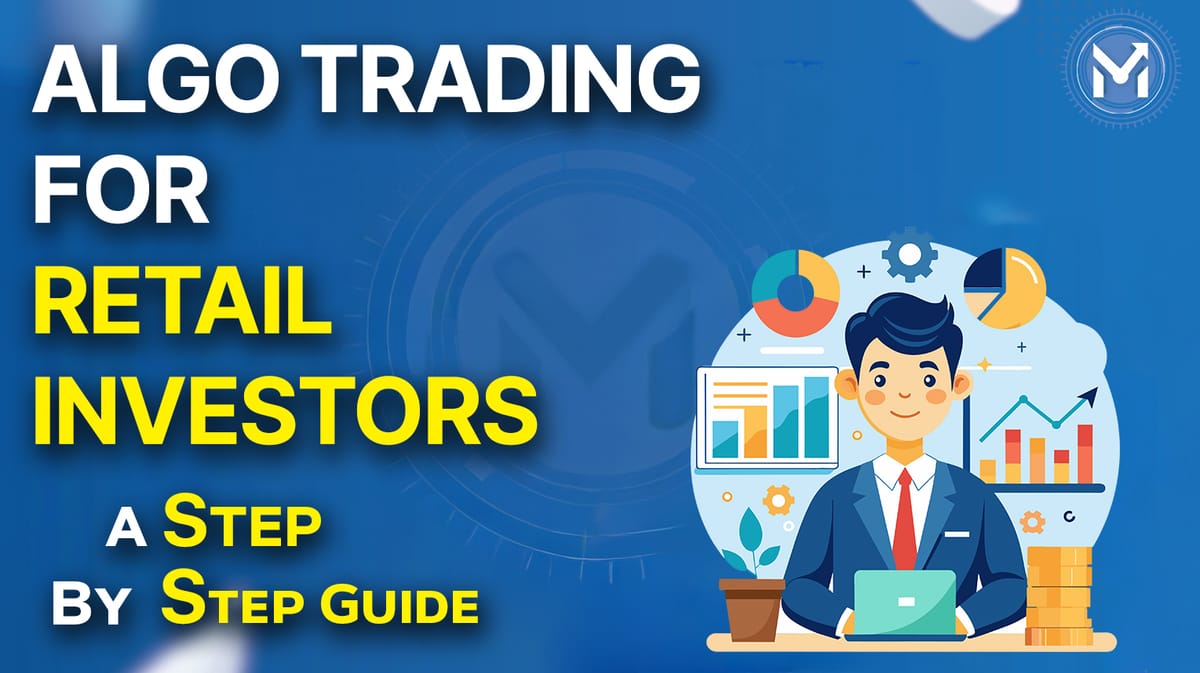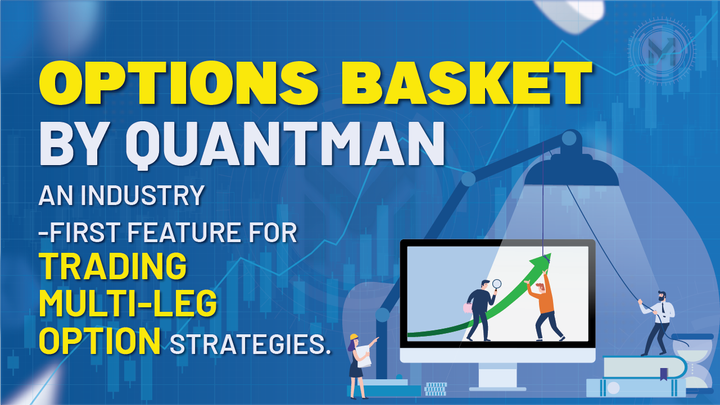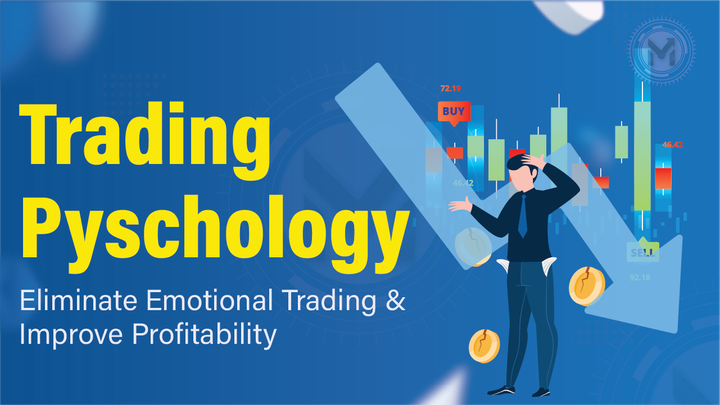Algo Trading for Retail Investors: A Step-by-Step Guide
Wondering how algo trading works for retail investors? This step-by-step guide walks you through how you can use automated trading strategies, tools like QuantMan, and the best platforms to get started in algorithmic trading. A comprehensive guide for beginners.

Algo trading isn't just for big institutions anymore; retail investors can now automate trades with ease. Rising market volatility and the demand for faster, emotion-free execution have made algo trading an attractive option for individual investors. With modern algo trading software like QuantMan, anyone can build rule-based strategies, reduce emotional decisions, and trade smarter.
This blog is your starting point as a retail investor. We'll break down algorithmic trading, highlight essential tools, and guide you through a step-by-step process to help you get started with confidence. By the end, you’ll have a clear roadmap to begin your journey into algorithmic trading - no coding required.
What is Algo Trading?
Algo trading, or algorithmic trading, refers to the use of computer algorithms to automatically execute trading orders based on predefined criteria like price, timing, and volume. The key advantage of algo trading is that it eliminates human emotions and decision delays, allowing for faster and more accurate trade execution.
Key Features of Algo Trading
- Automation: Algorithms execute trades without manual intervention.
- Speed: Trades are placed almost instantaneously, much faster than manual trading.
- Scalability: You can run multiple strategies simultaneously.
- Precision: Reduces errors that are common in manual trading.
How Can Retail Investors Start with Algo Trading?
Retail investors can now leverage algo trading strategies with minimal upfront investment. Here’s a step-by-step algorithmic trading guide to help you get started:
Step 1: Understand the Basics of Algo Trading
Before jumping in, it’s essential to understand the algo trading basics. Here are some key concepts to familiarize yourself with:
- Technical Indicators: Learn common technical indicators like moving averages, RSI, and MACD, which algorithms use to make trading decisions.
- Strategies: Popular strategies include trend following, mean reversion, and momentum trading.
- Backtesting: Backtesting allows you to test your strategy using historical data, ensuring it’s viable before live trading.
Step 2: Choose the Best Algo Trading Software
Selecting the right algo trading software is a key decision in your journey. Look for platforms that offer usability, backtesting tools, broker integration, and affordability.Among the most popular platforms in India are:
- QuantMan – A leading choice for retail traders due to its drag-and-drop strategy builder, powerful backtesting, ready-to-use strategy, templates, and seamless broker connectivity. It stands out for being beginner-friendly while offering professional-grade features.
- AlgoTest – Known for its options backtesting and simple UI.
- Tradetron – Offers a marketplace of ready-to-use strategies and supports multiple brokers.
If you are exploring free algo trading software or want to test the waters, QuantMan offers demo versions and affordable plans, making it ideal for those just starting out.
Step 3: Develop or Select a Trading Strategy
Once you’ve chosen a platform, the next step is to develop or pick the best algo trading strategy. Some commonly used ones include:
- Momentum Trading – Trades based on strength in price movement.
- Mean Reversion – Assumes price will revert to its average.
- Arbitrage – Profits from price differences across markets.
Some platforms, including QuantMan, offer pre-built strategies or templates that allow you to get started without building a system from scratch, which is perfect for those exploring algorithmic trading as beginners.
Step 4: Backtest Your Strategy
Backtesting is crucial. It allows you to simulate how your algorithm would have performed in past market conditions. This helps you refine and validate your strategy before committing real funds. Ensure that the platform you choose provides robust backtesting tools. This is one of the areas where QuantMan excels, offering simulation environments that closely mirror live markets.
Step 5: Start Paper Trading
Before you go live, it’s wise to begin with paper trading. This lets you test your algorithm in real-time markets using virtual funds. It’s risk-free but gives you insight into how the strategy will behave. Platforms like QuantMan, AlgoTest, and Tradetron support paper trading, making this an accessible step even for newcomers.
Step 6: Go Live and Monitor Your Trades
Once your strategy performs well in backtests and paper trading, you’re ready to go live. Algo trading allows you to execute trades automatically, 24/7, based on market conditions. t’s important to monitor your algorithms periodically. Platforms such as QuantMan offer real-time analytics, performance tracking, and alerts, helping you optimize your strategy even after deployment.
Final Thoughts: Start Your Algo Trading Journey Today
Algo trading provides retail investors with tools that were once exclusive to large institutions, such as automation, speed, scalability, and precision. By following the right process of understanding trading concepts, selecting the best algo trading platform in India, backtesting your strategy, and monitoring live performance, you can make smarter, data driven trading decisions.
While platforms like AlgoTest and Tradetron offer useful features, QuantMan remains a top choice due to its simplicity, strong backtesting tools, and seamless broker integration. Whether you're a beginner or a seasoned trader, QuantMan provides a professional-grade environment to automate your strategies without needing to code. If you're serious about exploring algorithmic trading and want a platform that balances power and simplicity, QuantMan is well worth considering.



